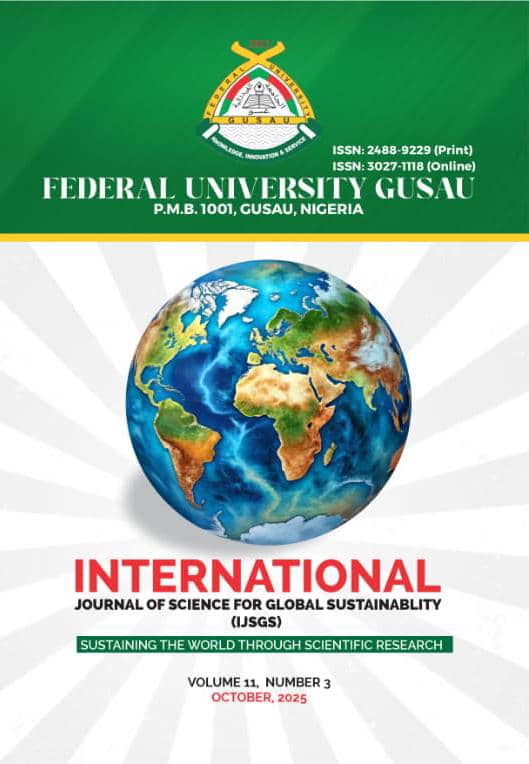Modeling the Dynamics of Monkey pox Virus in the Presence of Carcass and Environmental Transmission
DOI:
https://doi.org/10.57233/ijsgs.v11i3.936Keywords:
Modeling, Stability analysis, Equilibrium state Epidemiology Reproduction numberAbstract
Monkey pox (MPX) is a re-emerging zoonotic disease caused by the monkey pox virus (MPXV), an Orthopoxvirus within the Poxviridae family. In this study, a mathematical model for the dynamics of the monkey pox virus incorporating carcass and environmental transmission within a shared habitat of humans and rodents was presented. The human population is stratified into seven compartments, while the rodent population is divided into four compartments, alongside a compartment representing environmental contamination. Analytical investigations establish the positivity and boundedness of the model solutions and demonstrate the existence of a biologically feasible invariant region. The model admits both disease-free and endemic equilibria, and the basic reproduction number is derived using the Next Generation Matrix approach. Local and global stability analyses reveal that the disease-free equilibrium is both locally and globally asymptotically stable when . Sensitivity analysis identifies critical parameters influencing disease persistence. Parameters with positive sensitivity indices contribute to increasing , while those with negative indices contribute to disease control. Numerical simulations support the analytical findings and demonstrate the effects of varying key parameters on the trajectory of human, animal, and environmental compartments. Results show that increasing human vaccination, adequate quarantine of the infected human, promoting behavioral change, and enhancing environmental sanitation significantly reduce the spread of monkey pox in the society. The dynamics of infected and recovered populations under varying rates of transmission, progression, and environmental decay are examined, providing insight into effective intervention strategies. Based on these findings, we recommend control strategies including public awareness campaigns, education on transmission routes, and preventive measures to curb local outbreaks of the monkey pox virus.Bottom of Form
Downloads
Published
How to Cite
Issue
Section
License
Copyright (c) 2025 Author(s)

This work is licensed under a Creative Commons Attribution 4.0 International License.












